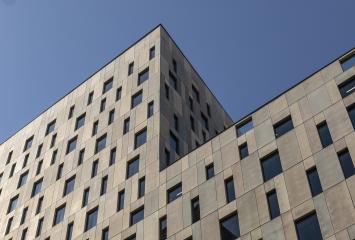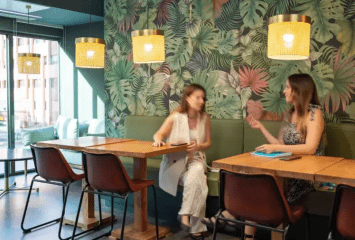Waste Management Optimization: Commitment Number 7 of Colonial's Sustainability Decalogue
Both the construction and renovation of buildings inevitably lead to the production of materials waste. Some of these materials have the potential to be harmful and require special treatment to avoid harming the environment, human health, or animal life. Others are not harmful but should also be managed with care to make the most of them and thus significantly reduce the need for new raw materials and the increase in the carbon footprint. In this regard, at Colonial, as part of our Sustainability Decalogue, we are committed to this through a series of optimization measures.
Measures Taken for Waste Management Optimization
Our goal has always been to successfully develop a circular economy model that protects the planet. The first step in this process, which is crucial, is to reduce the amount of waste generated during our real estate interventions. This includes sustainable material procurement, prioritizing reusable products, and implementing various control indicators. The latter is essential for understanding the amount of waste a building produces, both during its construction or renovation phase and during its operational phase, and for implementing continuous improvements if necessary.
The second pillar of this circular model, also encompassed by the famous three Rs of recycling, is the reuse of materials that cannot be recycled once used, sometimes for the same purpose and often for a different one. Specifically, the main strategies we follow to achieve this goal are the on-site reuse of existing construction materials, the reuse of materials resulting from renovations through digital market platforms, or the recovery of demolition waste. This principle significantly reduces the environmental impact of current and future construction projects. It's our responsibility.
Finally, at Colonial, we also base our waste management optimization on recycling. This translates into recycling bins in all our buildings to facilitate the proper entry of waste into the recycling chain. Plastic, paper, cardboard, glass, and even hazardous waste—all waste generated during the design or throughout the lifespan of the building, which cannot be reused, ends up in these containers to be repurposed. Sometimes as new raw materials, other times as an energy source. Additionally, we implement a reporting and procedure control system to ensure that recycling proceeds as it should.
Current Status of Waste Management Optimization at Colonial
A few years ago, we set an ambitious goal for our waste management: we aimed to have 85% of non-hazardous and hazardous waste generated in the buildings in our portfolio recycled or recovered by 2030. However, much to our delight and for the sake of the planet, in 2020, recycling or recovery reached 99% in our office building portfolio in Madrid and Barcelona and 91% in our office building portfolio in Paris. These numbers have been maintained in subsequent years. The priority now is to provide a final optimization boost to reach the desired 100%.
Colonial Catalog Buildings Exemplifying this Principle
As we mentioned in the previous section, according to the data obtained, more than 99% of the waste produced in Colonial's buildings has been utilized: 86% through recycling techniques, 9% through energy recovery, and less than 1% ending up in landfills. This means that the amount of waste converted into new raw materials for use in the construction and renovation of assets is extremely high, making us one of the leading real estate companies in waste management optimization. Our goal is to aim for zero waste in all phases of a building's life. We are committed to sustainability on all fronts, and this is a very important one.

